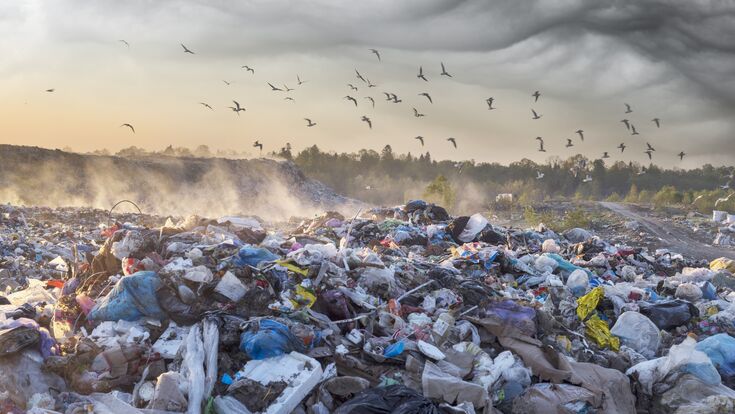Opinion : The New International Debt: Waste

A large billboard on the edge of New York’s Bryant Park flashes the live US budget ledger: $30 trillion in national debt and $400 million in debt interest. It’s ominous. Now, the US has not seen a national surplus since 1835, and has done quite well, so it begs the question: If a country can succeed despite this debt, how important is it?
Perhaps there is a different debt-surplus calculation that should occupy a billboard in Times Square. Global sustainability is a far more acute challenge, and the world is building up an “international waste debt” (IWD) that may be impossible to overcome.
While strong exports and foreign government relations can help eliminate the US national debt, the IWD is unforgiving. Rotting organic waste accounts for 5% of greenhouse gases (GHGs) globally and contributes significantly to global warming. Long-term, we are leaving the planet in a worse state than we found it.
Two billion tons of municipal solid waste are dumped yearly, equivalent to the weight of 12 million blue whales – a figure that will continue to rise. Yet, half the world’s population lives without adequate waste management services, blighting the lives of many in low and middle income countries where some 40% of solid waste is collected in contrast to ~98% in high-income countries.
Both the environment and society pay a heavy price for poorly managed waste. There are environmental and health costs of air pollution, surface and groundwater contamination, and damage to coastal and marine environments. The underprivileged in society shoulder this burden, often paying with their health; but we all suffer the consequences.
To reduce this unbearable societal burden, waste disposal methods must be changed. Technological solutions can transform waste management infrastructure and transform landfill waste into a resource, able to re-enter the supply chain if handled properly.
But time is short. Whereas national debt is something we can live with, we don’t have that luxury with IWD. On a localized level, precedents exist to address this potential catastrophe. For example, Emission Trading Schemes (ETS) create a market in carbon dioxide (CO2) emissions and other GHGs. So, heavy polluters can buy the right to emit more from countries with lower emissions –often countries who invested heavily to meet Paris Agreement pledges and are shifting to the 3rs (reduce, reuse, recycle).
Fortunately, we are not starting from scratch. To actively manage IWD, we can draw out the best from existing initiative like the UN’s ‘Future we Want’ or the EPA Waste Reduction Model. But we need to up the stakes now to make the issue tangible and actionable, becoming an international priority.
The key: Building bridges between governments, municipalities and the private sector to drive innovation and incentivize reduction, collection, treatment and disposal projects that can scale up nationally and globally. Leaders must direct national industries to introduce strategies that reduce waste at the outset and ensure it’s treated as a resource in circular consumption models.
Recording, tracking and trading IWD can build awareness of this huge challenge. Awareness drives action that shapes national policies and behaviors of creators, consumers and processors of waste, leading us to achieve health and environmental sustainability.
Each year, governments around the world balance their national budget ledgers. But they need to balance their national waste ledgers too. Only then can we avoid a catastrophic waste deficit.
About: Jack “Tato” Bigio, is co-founder and co-CEO of UBQ Materials, which has developed the world's first bio-based material (UBQ™) made entirely of unsorted household waste. The company diverts municipal solid waste from landfills and converts it into a climate-positive, fully recyclable thermoplastic for manufacturing.

